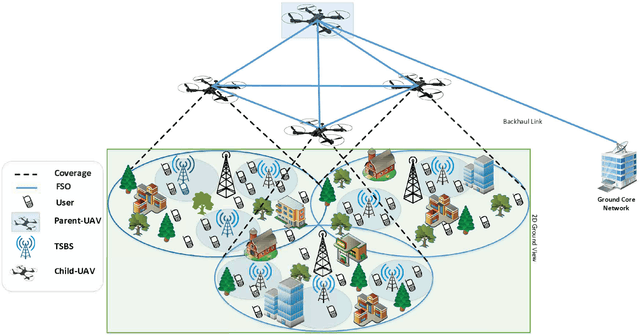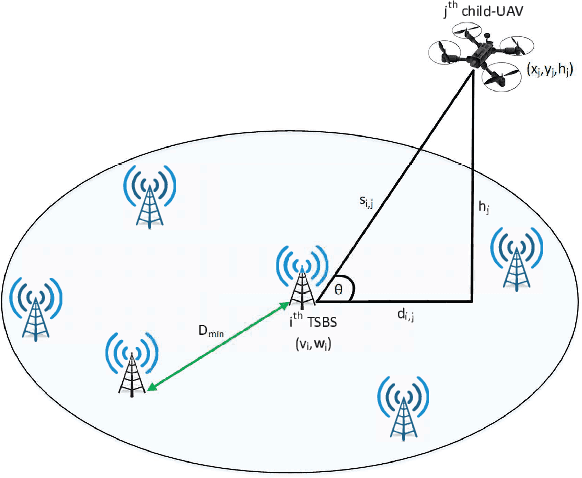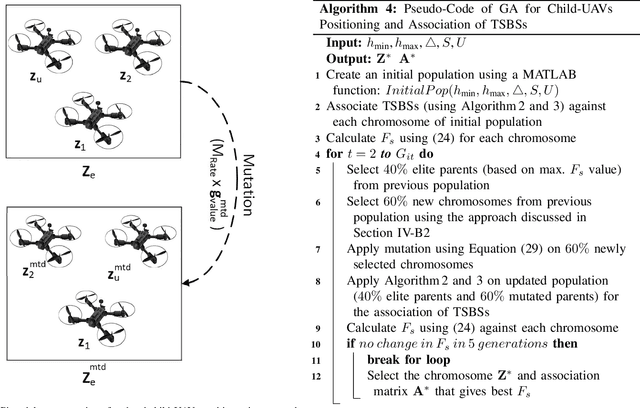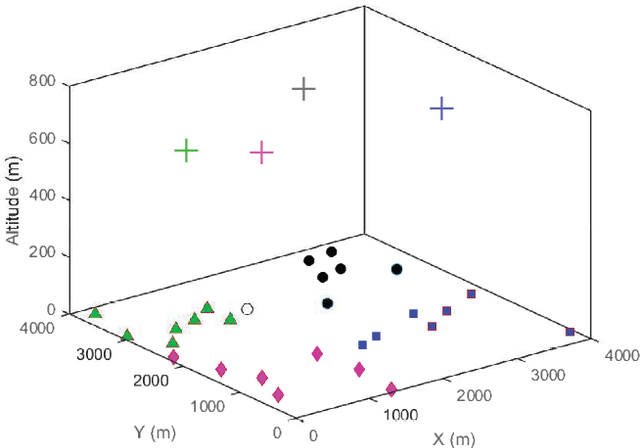Backhaul-Aware Intelligent Positioning of UAVs and Association of Terrestrial Base Stations for Fronthaul Connectivity
Paper and Code
May 01, 2021



The mushroom growth of cellular users requires novel advancements in the existing cellular infrastructure. One way to handle such a tremendous increase is to densely deploy terrestrial small-cell base stations (TSBSs) with careful management of smart backhaul/fronthaul networks. Nevertheless, terrestrial backhaul hubs significantly suffer from the dense fading environment and are difficult to install in a typical urban environment. Therefore, this paper considers the idea of replacing terrestrial backhaul network with an aerial network consisting of unmanned aerial vehicles (UAVs) to provide the fronthaul connectivity between the TSBSs and the ground core-network (GCN). To this end, we focus on the joint positioning of UAVs and the association of TSBSs such that the sum-rate of the overall system is maximized. In particular, the association problem of TSBSs with UAVs is formulated under communication-related constraints, i.e., bandwidth, number of connections to a UAV, power limit, interference threshold, UAV heights, and backhaul data rate. To meet this joint objective, we take advantage of the genetic algorithm (GA) due to the offline nature of our optimization problem. The performance of the proposed approach is evaluated using the unsupervised learning-based k-means clustering algorithm. We observe that the proposed approach is highly effective to satisfy the requirements of smart fronthaul networks.
 Add to Chrome
Add to Chrome Add to Firefox
Add to Firefox Add to Edge
Add to Edge